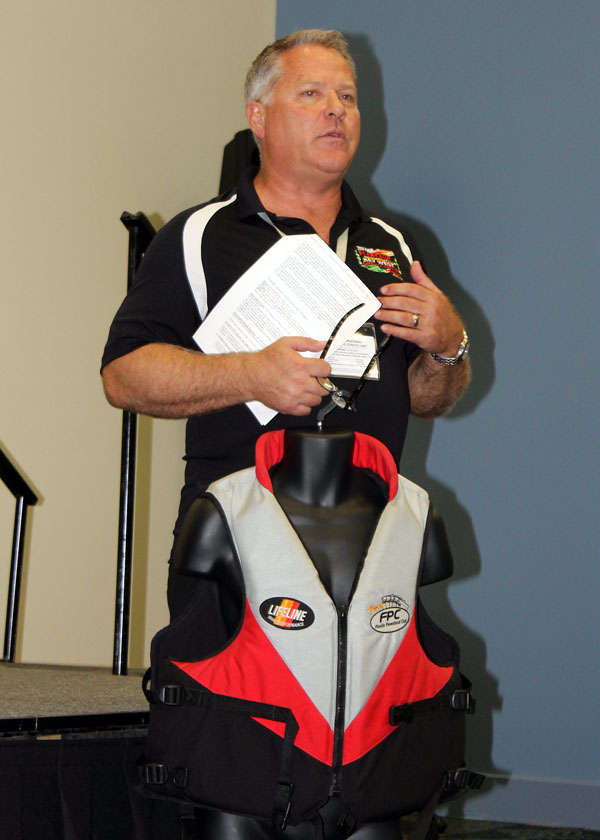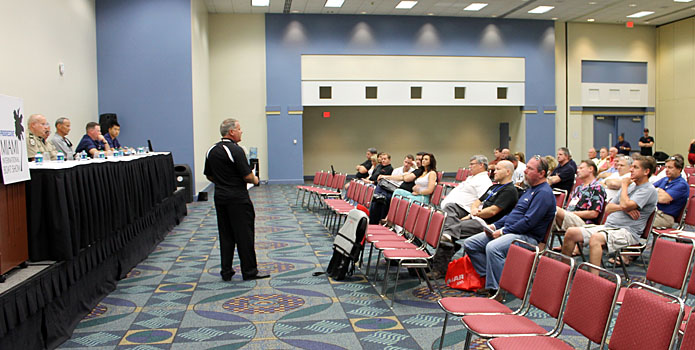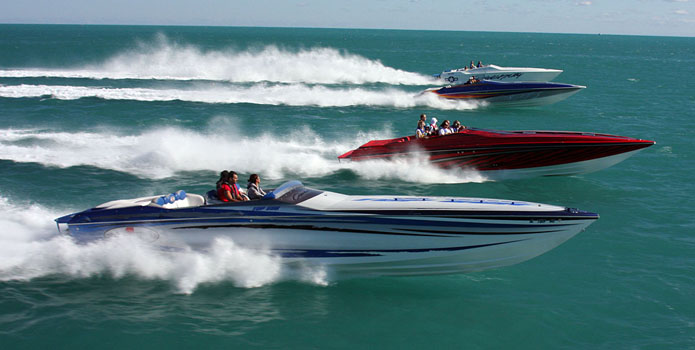Florida Powerboat Club Launches Safety Initiative
During a meeting at the Miami International Boat Show on Friday, Feb. 15, Stu Jones announced the Florida Powerboat Club’s new Strategic Safety Management Initiative for all of its poker runs in 2013. On hand for the meeting were representatives from the United States Coast Guard, the Miami-Dade County Fire Rescue Marine Operations Unit, the Florida Fish and Wildlife Conservation Commission and local law enforcement agencies.

Also in attendance were well-known figures from the high-performance powerboat community including Desert Storm Poker Run organizer Jim Nichols, John Cosker of Mystic Powerboats, Marc Granet of Miss GEICO racing, Devin Wozencraft of Wozencraft Marine Insurance, Bob Teague of Teague Custom Marine, the title sponsor for the Desert Storm event, and several prominent members of the club.
The new FPC safety management initiative includes additional safety boats, a helicopter with rescue divers and greater enforcement of existing club safety rules and guidelines. Basic additions to the existing format, according to a document from the organization, include the classification of three “speed groups” (Sportboat 45-59 mph, Performance 60-99 mph and High-Performance 100-150 mph). Each group will be color-coded with hull side decals. Launches for each group will continue to be staggered. There will be no “paceboat” for boats in the High-Performance class.
While the overall goal of increased safety for participants in the club’s poker runs, as well overall safety on the courses during events, through the initiative was embraced by everyone in attendance, the planned implementation of the guidelines produced more than a little disagreement between Jones and a few members of the club. There were two primary sticking points. The first was Jones’ funding proposal for the initiative in which members with boats that fall into the High-Performance class would pay an additional $250 per event, members with boats that fall into the Performance class would pay an additional $150 per event and members with boats that fall into the Sportboat class would pay no additional fee.
In addition, Jones said he will be asking members with boats in the High-Performance class to name the FPC as an additionally insured party on their individual policies for club events in which they participate.
“Some of the carriers will do it and some won’t,” said Jones. “But we want you to request it.”
“You are putting a fee on me because I have a bigger, faster boat,” said Kenny Armstrong, a club member who owns Phantom, a 48-foot Marine Technology, Inc., catamaran. “I think you need to look at how you assess the fee. You’re insurance is useless to me.”
Another member said, “A lot of the members in the smaller boats come to see the bigger boats. Give them a little fee and you’ll probably make a lot of people happy.”

While Jones was adamant that “safety is the issue and speed is the culprit,” he said he would address the parity of the per-event surcharge for the safety management initiative. He admitted that with industry support down with the economy in the past five years he has been forced to place costs on club members that the club’s sponsors normally would have shouldered before the recession.
“A lot of the cost is falling on the members,” he said. “I aim to change that as sponsors come back on board. I don’t want to assess the members, but we still have a nut to crack. If we can’t continue—we can’t continue. We had to come up with a program that would work. We are an organized club that has been around for 20 years. I think it’s been a great thing for everybody.”
The second point of contention between Jones and members who own boats in the High-Performance class centered around enforcement of the rule that no boat will be allowed to run more than 110 mph with passengers in the rear seats, as well as a 150-mph absolute speed limit during all club events.
“I just want you to be aware that you’re asking those of us with families and friends and boats that can easily and safely run over 110 mph to bring a second boat or ride down in the car so they can join us,” said Bob Christie, the owner of Speed Racer, a 44-foot MTI catamaran. “I think you are going to lose a lot of guys with the faster boats. I think you could end up with a sportboat club. I just want you to be aware of that.”
“I do understand that, Bob,” Jones responded.
Jones said that he will rely on club members to help him not just by following the guidelines in the safety management initiative, as well as all of the club’s existing safety rules, but in helping him with enforcement by reporting infractions they observe during events.
“We are all in this together,” he said. “We need to police ourselves. If you guys can’t help me do it, I’m out. We won’t have a club. I have to protect my business and what we have created as a club.”


